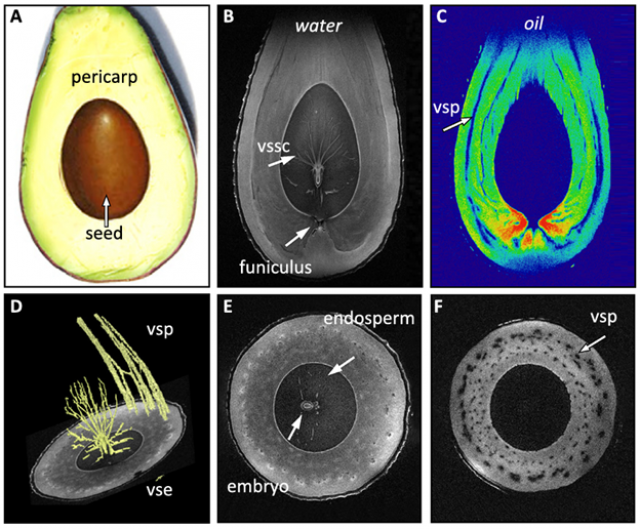Jul 16, 2025
MRI advancements herald new possibilities for plant imaging
Magnetic resonance imaging is an established tool for human medical diagnostics, but recent advancements mean that it now offers plant researchers unprecedented capabilities for non-invasive visualization of plant structures and systems.

Magnetic resonance imaging is a mature, widely used technique in a variety of scientific fields, from materials research to clinical medicine. One area where it has seen less application is with living, non-human organisms. Thomas Neuberger, director of Penn State’s High-Field MRI Facility, is the co-author of a new paper recently published in The Journal of Plant Physiology that highlights the advances being made to use novel, non-invasive MRI techniques to better understand organic processes in plants.
In the paper, Neuberger and co-author Ljudmilla Borisjuk of Germany’s Leibniz Institute of Plant Genetics and Crop Plant Research discuss the technical challenges researchers have had to overcome, detail recent advancements in the field, highlight novel use cases, and assert MRI’s status as a vital tool for cutting-edge plant research now and in the future.
The use of MRI to study plants is not a new idea, having emerged along with development of the technique’s applications for human health in the 1970s, but resources and attention to study distinctive plant characteristics were limited, and doubts about viability caused exploration to lag for decades until very recently.
“While progress has been made, plant MRI research still has significant room for development,” said Neuberger. “Both plant and materials imaging have yet to fully harness the capabilities MRI offers. It's true that imaging a water-rich subject like the human body presents fewer challenges compared to plants, which contain numerous air pockets and rigid tissues that often appear as signal voids in MRI. However, the primary reason for the slower advancement in plant MRI is likely the limited investment in both resources and education dedicated to this area.”
“Clinical MRI, with its direct relevance to human health, has understandably received more attention and funding, leaving plant-focused applications underexplored in comparison.”
Some recently developed MRI techniques have allowed researchers to non-invasively visualize metabolic processes and delicate plant structures in action, such as lipid imaging during seed development and aging, studies of plant development under stress conditions such as drought, the characterization of plant diseases, pest monitoring, and tracking nutrient transport. Another promising, rapidly emerging field is the use of low-field portable systems suitable for imaging plants in-situ.
“MRI offers several unique advantages, the most significant being its non-invasive nature,” said Neuberger. “This allows researchers to image plants in vivo across multiple stages of development without damaging the specimen. It enables the acquisition of high-resolution, three-dimensional datasets with excellent contrast—without the need for sectioning, staining, or the use of radioactive tracers.”
“At our facility—and in cooperation with our partners—we have developed a technique to quantitatively image lipid distributions within intact seeds on a pixel-by-pixel basis. This means we can detect how lipid content and distribution change following genetic modification or crossbreeding—all without harming the seed. Currently, no other imaging method provides this level of non-destructive, spatially resolved biochemical insight.”
Beyond the potential to expand our understanding of plant systems, Neuberger underscores a vital practical application addressing one of humanity’s most fundamental needs: food security. “The ability to perform in vivo, non-invasive imaging creates new opportunities to monitor plant health and growth at the level of individual specimens. Ultimately, greater investment in plant MRI is essential. Plants are the foundation of our food systems—without them, human survival is not possible.”